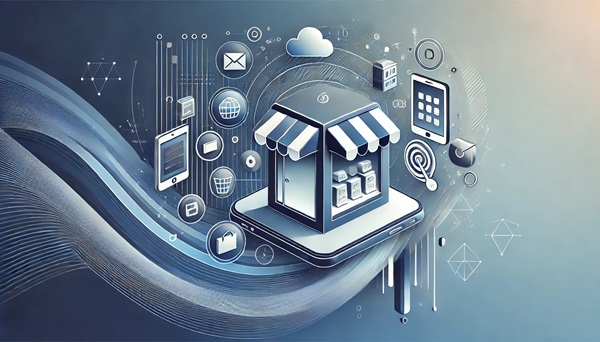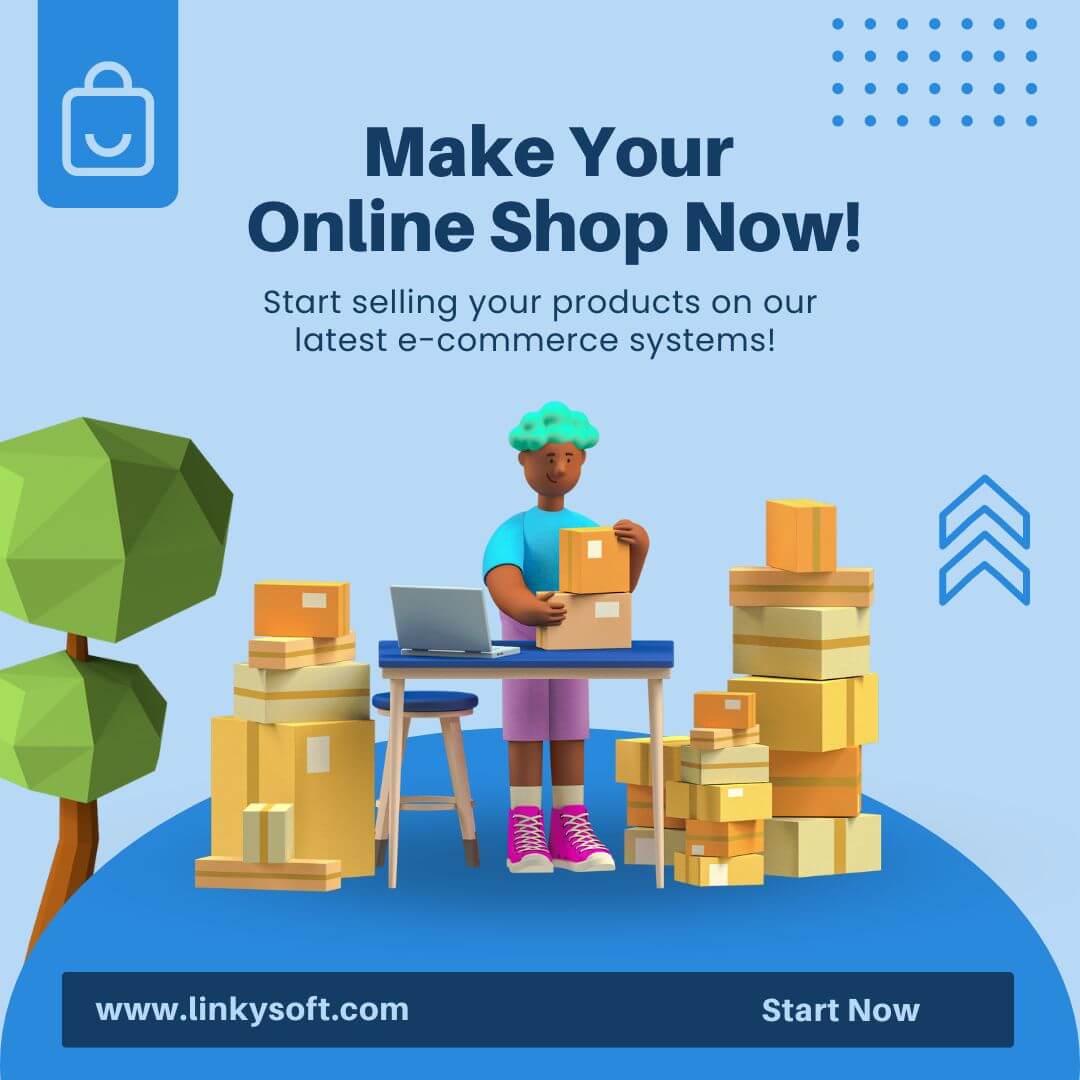In today’s digital-first economy, the demand for online services and digital products is growing rapidly. Creating an online service store that offers digital products allows businesses to tap into this growing market. Digital products, which include eBooks, software, graphics, online courses, and other intangible products, are unique in that they don’t require physical inventory or shipping, offering a low-overhead, highly scalable business model.
we will walk you through the process of building an online service store step-by-step. Whether you are an entrepreneur looking to start a new business, or an existing business owner wanting to expand into digital products, this guide will offer valuable insights into setting up and running a successful online store. We will cover everything from selecting the right platform to building marketing strategies, and will dive deep into best practices that ensure your success.

Section 1: Choosing The Right Platform For Your Online Service Store
Understanding E-commerce Platforms
The first and most important decision when starting your online service store is choosing the right platform. An e-commerce platform is the software that allows you to build your website, manage products, handle payments, and facilitate the delivery of digital products. There are various e-commerce platforms available, each with its own pros and cons. Some popular platforms include WooCommerce, Shopify, and BigCommerce. However, when selling digital products, you must ensure that the platform supports features like secure downloads and flexible payment options.
Types of E-commerce Platforms
Self-Hosted Platforms
Self-hosted platforms like WooCommerce (built on WordPress) offer full control over your store’s design, features, and functionality. This flexibility allows you to create a completely customized shopping experience. However, the downside is that you will be responsible for maintaining the hosting, updates, and security of your store.
Fully Managed Platforms
Fully managed platforms like Shopify and BigCommerce, on the other hand, take care of hosting, security, and maintenance for you. These platforms are typically easier to use and require less technical know-how. While they may not offer the same level of customization as self-hosted solutions, they provide excellent support and tools to quickly get your store up and running.
Linkysoft's E-commerce Solutions
For businesses looking to set up an efficient online service store, Linkysoft's e-commerce systems provide highly effective solutions. Our platforms are designed to cater to the specific needs of businesses selling digital products, providing features such as automated delivery systems, secure payment gateways, and advanced analytics tools. For example, Cartz is one of our most advanced e-commerce systems, offering a wide array of features for digital product vendors.
Section 2: Defining Your Digital Products
What Are Digital Products?
Before setting up your store, it’s crucial to understand what digital products are and what type of digital products are best suited for your business. Digital products are intangible items that can be delivered electronically. They come in many forms, including:
- eBooks: These are digital versions of books that can be read on electronic devices.
- Software: Applications or tools that users can download and use on their devices.
- Music and Audio Files: Digital music, podcasts, or sound effects available for download.
- Online Courses: Educational content offered in the form of videos, tutorials, and interactive materials.
- Design Assets: Graphic design files such as fonts, templates, and stock images.
Each type of product has its own delivery method and customer base. Some digital products, such as eBooks and software, may be one-time purchases, while others, like online courses or subscription services, can offer recurring revenue streams. Understanding the types of products you want to offer is the first step toward building your store.
Identifying the Right Niche
To succeed in the competitive world of digital products, it’s essential to define a clear niche. For example, some online stores may focus on selling design assets like fonts, logos, and templates, while others may specialize in offering educational content such as eBooks, online courses, and training programs. When choosing your niche, research the demand for specific products and consider what skills and resources you can leverage.
For example, if you have expertise in graphic design, you might focus on selling design-related digital products such as templates or digital artwork. If your background is in education, offering online courses or eBooks may be the best fit. Ensure that your products provide value and solve specific problems for your target audience.
Section 3: Setting Up Payment Gateways
Integrating Secure Payment Systems
An essential element of your online service store is a reliable and secure payment system. Customers need to trust that their payments will be processed securely, especially when purchasing digital products. The most common payment methods include credit card payments, PayPal, and other online payment gateways such as Stripe or Square.
How To Choose the Right Payment Gateway
When selecting a payment gateway, consider factors such as ease of integration with your e-commerce platform, fees, and the availability of multiple payment options. Some platforms, such as Shopify, offer their own payment solutions that integrate seamlessly with their stores. For other platforms, you may need to manually configure third-party gateways such as PayPal or Stripe.
Handling Refunds and Chargebacks
With digital products, refunds and chargebacks can sometimes be more challenging than with physical products. Many platforms offer built-in tools for managing refunds, but it’s essential to have clear refund policies in place that outline the conditions under which refunds will be granted. Make sure your policies are clear and transparent to prevent misunderstandings with customers. Additionally, protect yourself against fraud by using fraud detection systems and monitoring chargebacks.
Section 4: Creating A User-Friendly Website
Designing For Digital Commerce
Your website design plays a crucial role in the success of your online service store. When customers visit your store, they should be able to navigate easily, find what they are looking for, and purchase your digital products quickly and efficiently. A clean, well-organized website will increase conversion rates and provide a better user experience.
Essential Elements of A User-Friendly Website
- Navigation: Ensure your website has a simple and intuitive navigation menu, with categories clearly labeled so that customers can find products easily.
- Search Functionality: Implement a search bar to allow customers to quickly locate specific products. Make sure the search function includes filters for narrowing results by price, category, and other attributes.
- Mobile Optimization: Many customers will access your store via mobile devices, so it’s critical that your website is fully responsive and offers a seamless experience on all screen sizes.
Utilizing Linkysoft’s Advanced Systems
Linkysoft offers powerful e-commerce solutions designed for digital commerce. Our advanced Togar and Togar Pro systems provide flexible customization options and advanced features, including integrated digital product delivery, customizable storefronts, and user-friendly interfaces that ensure an optimal shopping experience for your customers.
Section 5: Creating Product Listings and Descriptions
Writing Effective Product Descriptions
Effective product descriptions are critical to the success of your digital products. Your description should clearly explain what the product is, who it is for, and what benefits it provides. Since your customers can’t physically see or interact with your products, your descriptions need to be detailed and engaging to help them make an informed decision.
Best Practices for Product Descriptions
- Be Clear and Concise: Avoid unnecessary jargon and focus on explaining the key features and benefits of your product. Customers should be able to quickly understand what the product is and why they should buy it.
- Use Bullet Points: When listing product features, use bullet points to break up text and make the information more digestible for readers.
- Incorporate Keywords: To improve search engine rankings, incorporate relevant keywords into your product descriptions. Make sure the keywords flow naturally and don’t sound forced.
Section 6: Implementing SEO Strategies For Your Store
Understanding SEO For E-commerce
Search Engine Optimization (SEO) is essential for driving organic traffic to your online service store. SEO involves optimizing your website and content so that it ranks higher on search engine results pages (SERPs). Higher rankings mean more visibility, which can lead to more sales. There are several on-page and off-page SEO strategies that can be used to optimize your store.
On-Page SEO Tactics
On-page SEO refers to the strategies you use on your website to improve its visibility in search engines. This includes optimizing your product titles, meta descriptions, image alt texts, and URLs with relevant keywords. Additionally, you should focus on improving site speed and ensuring your site is mobile-friendly, as these factors also impact your search rankings.
Section 7: Marketing Your Online Service Store
Effective Digital Marketing Strategies
Marketing is the backbone of any successful online service store. Once your store is live, you’ll need to implement various marketing strategies to attract customers. A combination of organic marketing (SEO, content marketing) and paid marketing (social media ads, Google Ads) can help drive traffic to your store.
Building a Social Media Presence
Social media platforms like Facebook, Instagram, and LinkedIn are great tools for promoting digital products. By building a presence on these platforms, you can reach potential customers and engage with them. Make use of paid ads on social media to reach a broader audience and promote specific products.
Email Marketing
Email marketing is one of the most effective ways to nurture leads and turn them into paying customers. By offering a free digital product or resource in exchange for a customer’s email address, you can build a mailing list. Regular email campaigns can be used to promote new products, offer exclusive discounts, or share useful content with your subscribers.
Section 8: Managing Customer Support For Digital Products
Providing Efficient Support Systems
Good customer support is just as important for digital product stores as it is for physical product stores. Even though there is no shipping involved, customers may still encounter issues such as difficulties downloading products or accessing their accounts. Providing multiple support channels such as email, live chat, and a help desk can ensure that your customers receive the assistance they need.
Using FAQs to Preemptively Address Common Issues
FAQs (Frequently Asked Questions) are an excellent way to preemptively address common issues your customers may face. By creating a comprehensive FAQ section on your website, you can save time by answering questions about product usage, delivery methods, payment options, and refund policies in one place.
Section 9: Analyzing Your Store’s Performance
Using Analytics To Drive Growth
Once your store is up and running, it’s important to regularly analyze its performance. Tools like Google Analytics provide valuable insights into your website traffic, customer behavior, and sales trends. Understanding these metrics will help you make data-driven decisions to optimize your store and marketing efforts.
Key Metrics To Track
- Conversion Rate: The percentage of visitors who complete a purchase. A low conversion rate may indicate that there are issues with your website’s design, product pages, or checkout process.
- Average Order Value (AOV): The average amount spent by customers per order. Increasing your AOV can help boost revenue without needing to acquire more customers.
- Customer Retention Rate: The percentage of customers who make repeat purchases. Improving customer retention through strategies such as email marketing and loyalty programs can significantly boost your store’s profitability.
Conclusion: Building A Sustainable Online Service Store
Creating an online service store that offers digital products is an exciting and potentially profitable venture. The key to success lies in proper planning, from selecting the right platform and defining your digital products, to implementing effective marketing strategies and providing excellent customer support. By using e-commerce platforms like Cartz and Togar Pro from Linkysoft, you can streamline your operations and focus on growing your business. We hope this comprehensive guide has given you the insights you need to succeed in the world of digital commerce.








